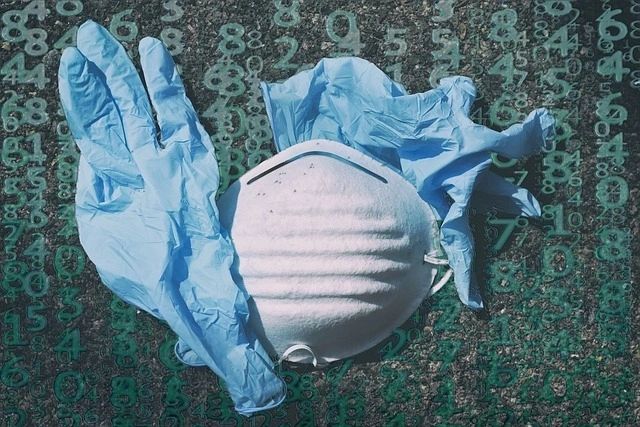
COVID-19 – Understanding PPE
Personal Protective Equipment: It’s all about Safety
The talk about PPE, such as masks, gloves and topical disinfectants is all the rage nowadays. Until recently the general public had little awareness of the importance of PPE and many might not have known what the letters actually stand for.
Since then, we have all gotten a crash course on the topic. However, there are many misunderstandings on the value of such protective gear. Instructions for proper use and care are rarely if ever discussed. Yet, PPE is by now a matter of personal and public Safety.
An extra layer of protection
PPE can provide an extra layer of protection for fending off COVID-19 and for preventing its spread, especially as we venture outside the home or live with someone who is infected or ill. Yet, for it to be effective, PPE must be used consistently and correctly.
That said, the use of PPE does NOT replace the general Safety precautions:
· Social Distancing by at least 6 feet,
· NOT touching one’s face – nose, eyes mouth. These are portals of entry for the virus.
· Washing/Disinfecting hands frequently. Viral material is picked up by bare or gloved hands and transfers easily through touch, which leads to self-infection and spreading of the virus.
Non-compliance with safety precautions and suggested or required PPE can turn into a deadly dare.
Also, used PPE must be treated as contaminated material and must be disposed of properly in garbage or other designated receptacles. Do NOT toss on the ground, leave on park benches or on car seats.
MASKS
The main purpose of masks is to reduce and stop virus spread
COVID-19 spreads through infected respiratory droplets released during coughing and sneezing. N95 masks are the most effective at filtering out these droplets but due to shortages they are reserved for those who are the most exposed to concentrated viral loads, such as front line health workers and cleaners.
For us, the general public, disposable masks —such as surgical or even dust masks— as well as reusable, home-made masks have become the norm. The main purpose of these masks is to reduce and hopefully stop the spread of the coronavirus by those who may be unknowing carriers or incubators of the virus. Until we can test people consistently, we are all risks to each other.
General-use masks do not filter out fine droplets and are said not to be protective. However, when combined with social distancing, they reduce the impact of low speed viral sprays that we might otherwise inhale. Although far from perfect, they keep us as safe as possible. It’s the best we got and at this point anything is better than nothing at all.
Some points to remember about masks:
· No matter what type of mask is used, it MUST cover the nose, the mouth and the chin. Many people do not cover their noses. Others shift the mask to the cheek or even under the chin thus leaving the whole face uncovered. And so, they become risks to themselves and to others.
· Wash hands before applying and after removing the masks. Do not touch them once they are in place due to possible contamination with viral particles.
· For surgical and dust masks the metallic strip has to be at the top. It is meant to be molded snuggly to the bridge of the nose.
· Surgical and dust masks are disposable and should NOT be re-used.
· Reusable, home-made masks also have to be replaced or cleaned after use. They can be laundered and put into the dryer. Here is more information from the CDC on this topic.
GLOVES
For the general public, the use of gloves for protection is controversial at best.
When out and about, it is reasonable to suspect that any surfaces could be contaminated with viral material. And so, people may be tempted to wear gloves in order to avoid contact with the coronavirus. However, there is concern that the use of gloves may lead to some bad and even harmful habits.
In reality, contaminated gloves are just as bad as contaminated bare hands for self-infection and for spreading the virus to surfaces and to others. All of us must be aware of this, which also includes those who decontaminate and clean workplaces and homes.
Concerns about the wearing of gloves include:
· It is said that gloves may give people a false sense of security, which may lead them to spread contamination more easily. As wearers feel shielded from the virus, they are not afraid to touch everything around them with their polluted gloves, such as fruit and produce in grocery stores, items standing on desks or shelves etc.
· Gloves are worn for extended periods of time. The longer they are worn, the more infectious material will be picked up and ultimately spread.
· A major worry is that people replace frequent washing and disinfecting of hands by using gloves instead. Gloves are NOT a replacement for intense hand hygiene. They have to be changed often – or “gloved” hands must be regularly washed, cleansed and disinfected just as bare hands must be.
· Hygiene rules are not followed. Wash hands before donning the gloves and after removing them. Strip them off, starting at the cuff, which turns them inside out and dispose of them properly.
· Disposable gloves are not to be re-used. They too must be discarded in garbage or other designated receptacles.
· That said, some state that gloves remind people NOT to touch their face, which would be a good thing.
In this COVID-9 pandemic we cannot take anything for granted anymore. Every day, we learn new things about the virus and about ourselves.
And so, learn about PPE and be safe for yourselves and for others. It is the right thing to do.
****
Meet me online:
Email: [email protected]
Visit my website hearing-loss-talk.com
Join me on Facebook: https://www.facebook.com/whatdidyousaybook/
I even Tweet: @WhatDidYouSay88